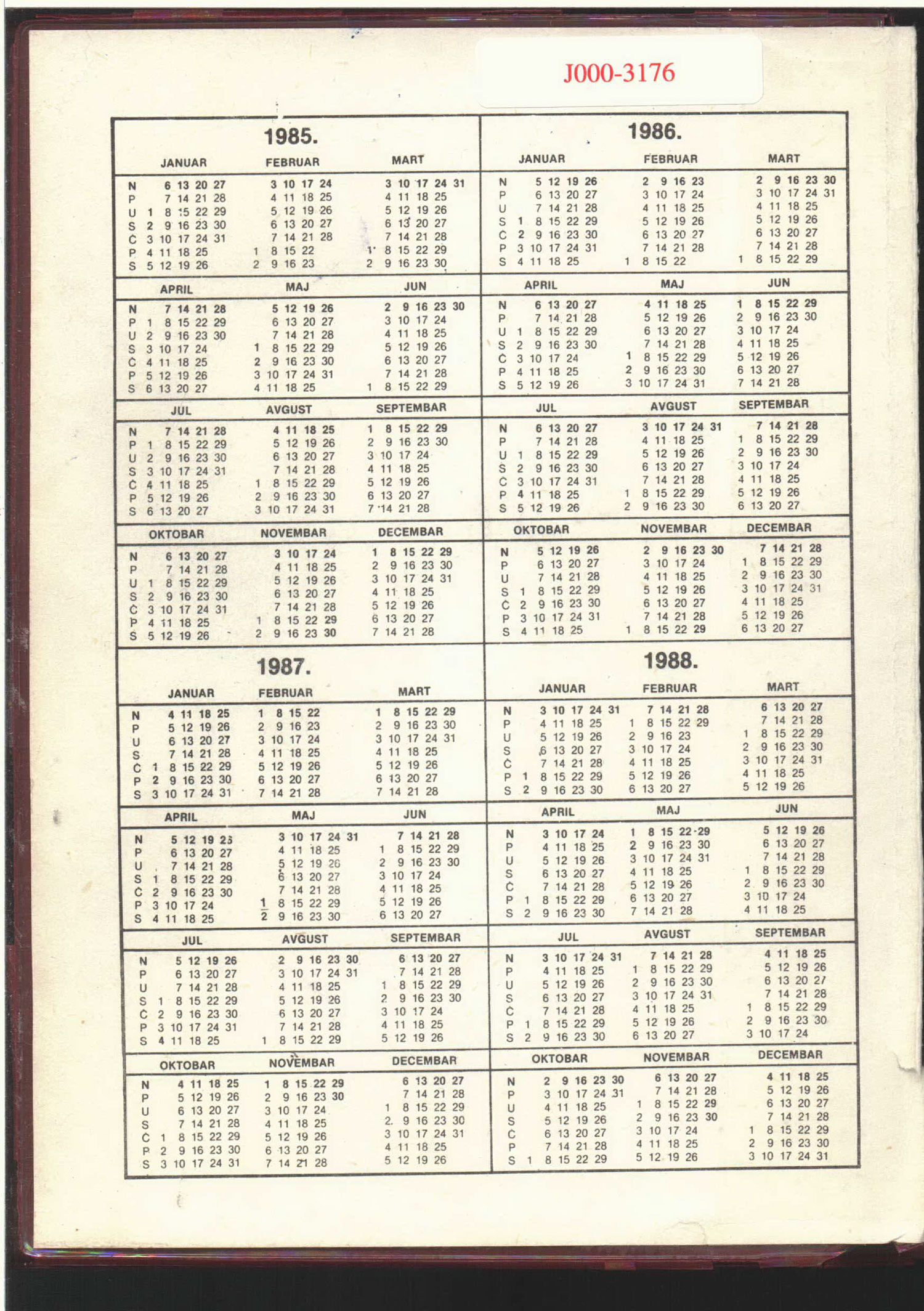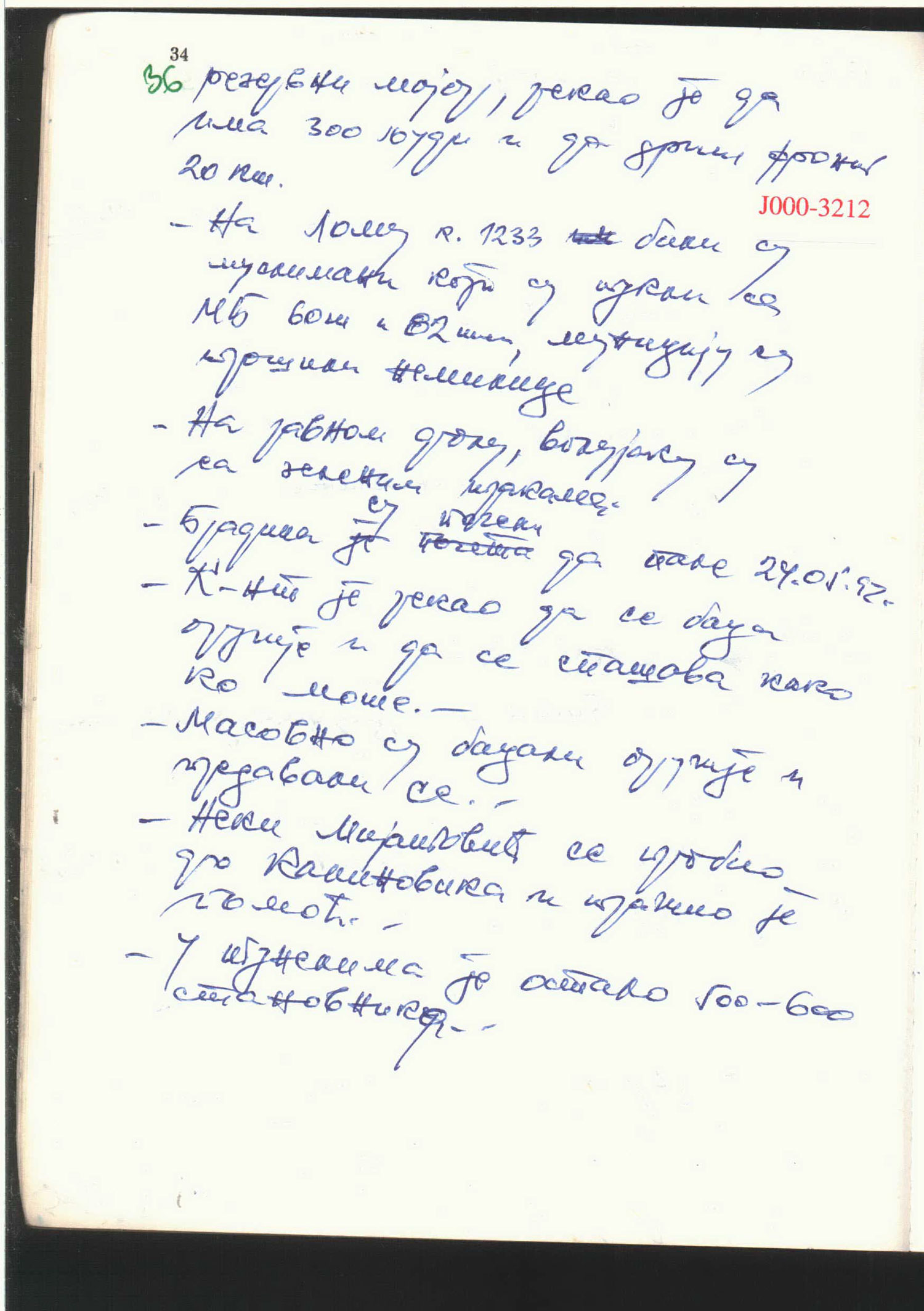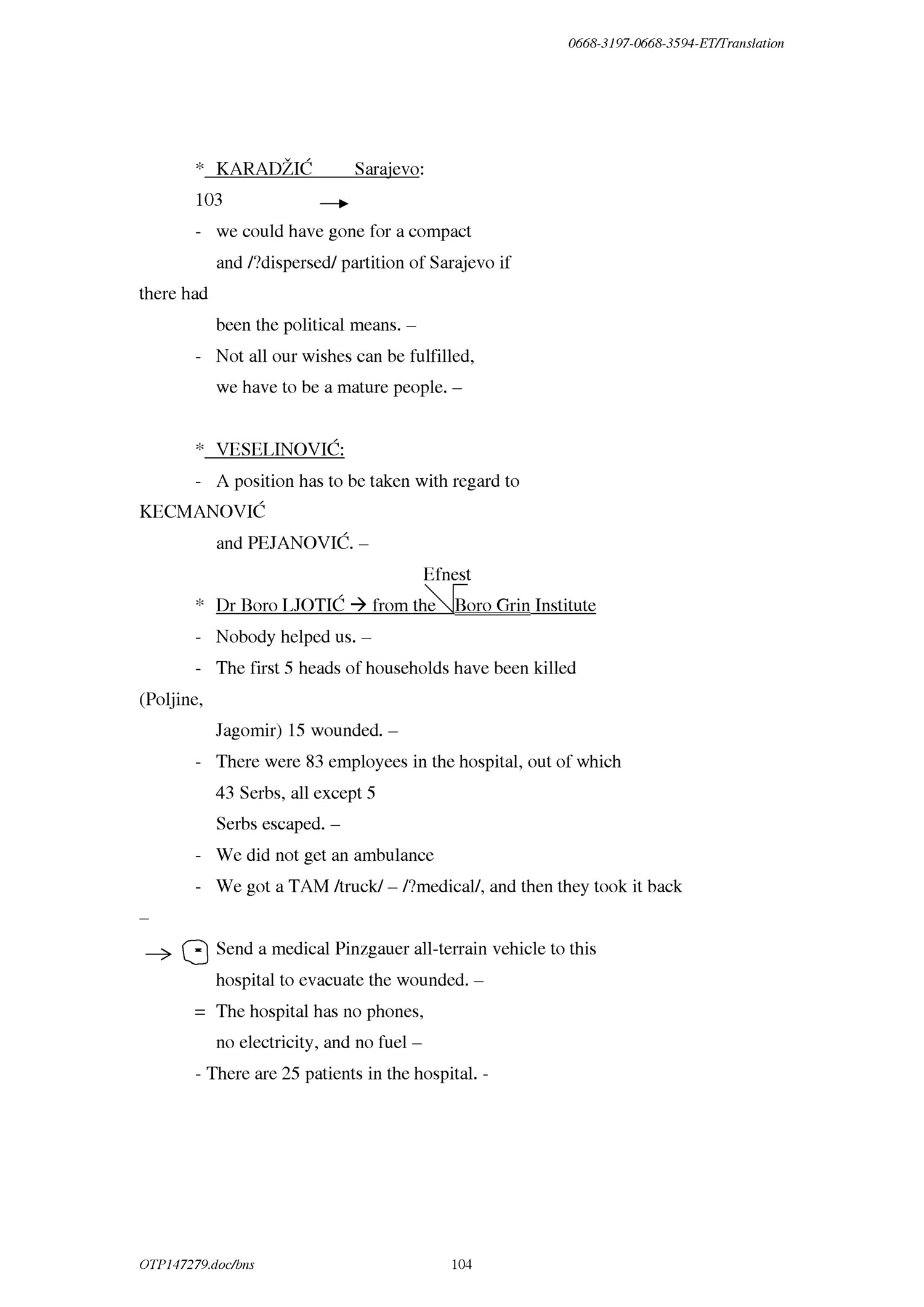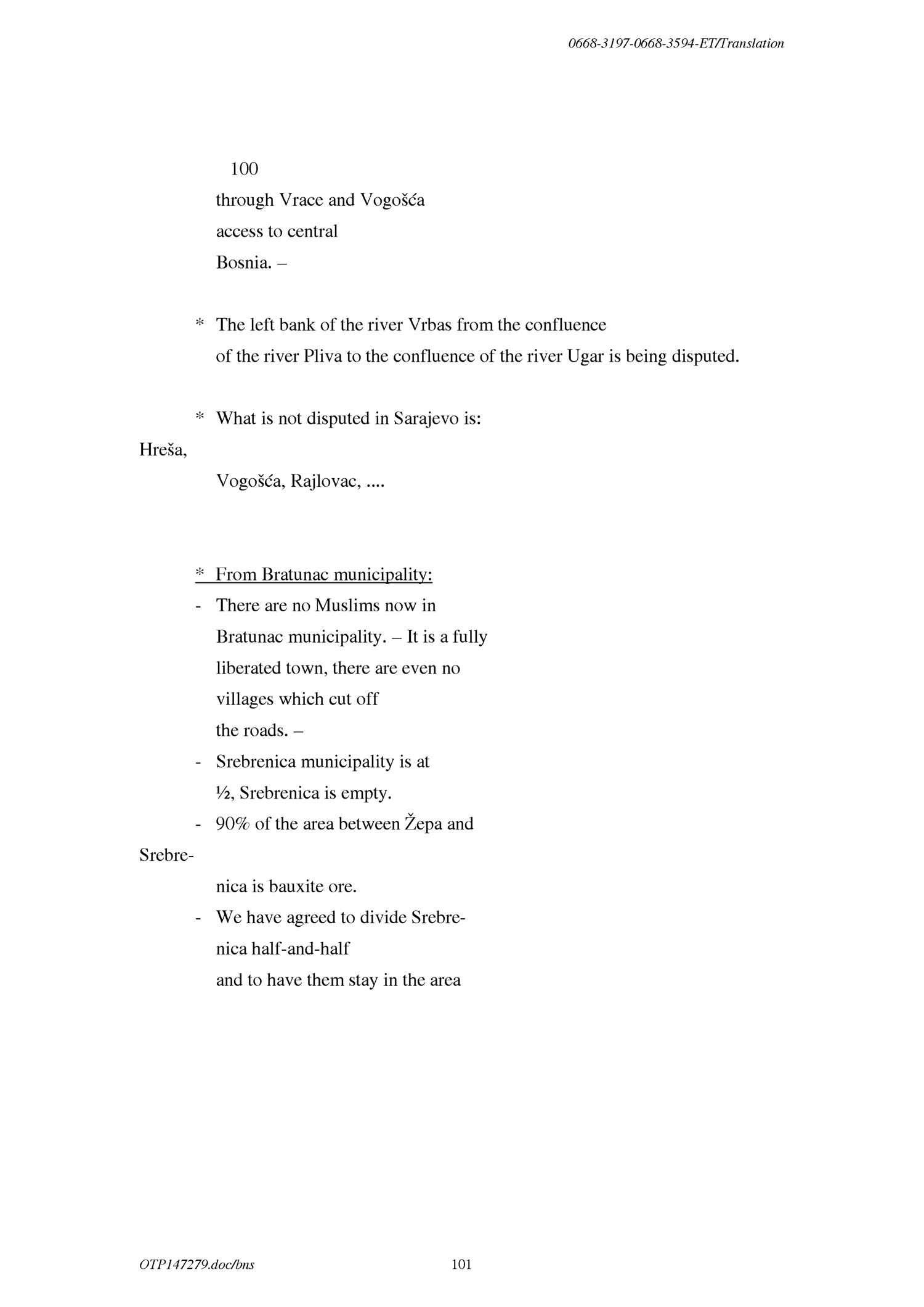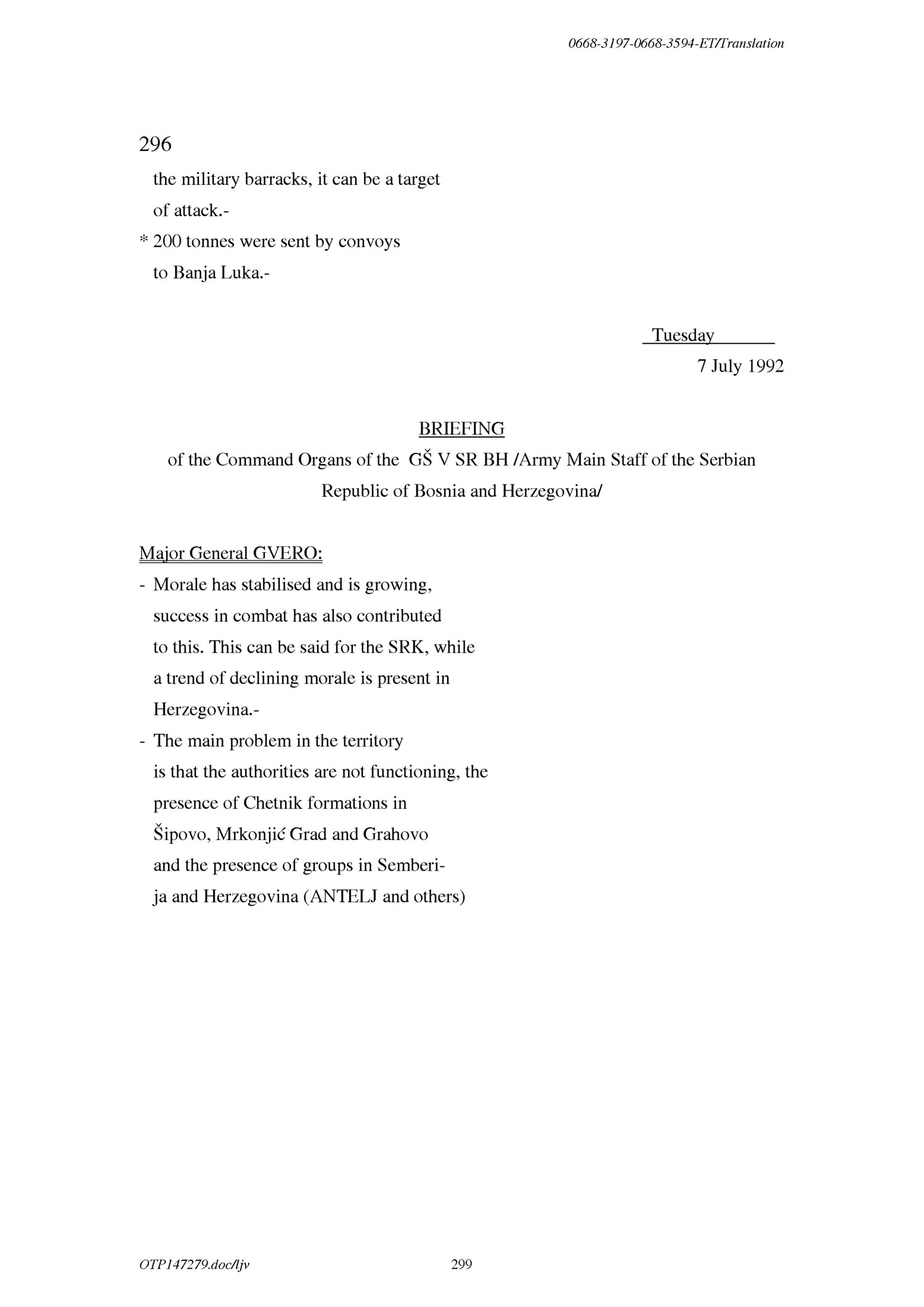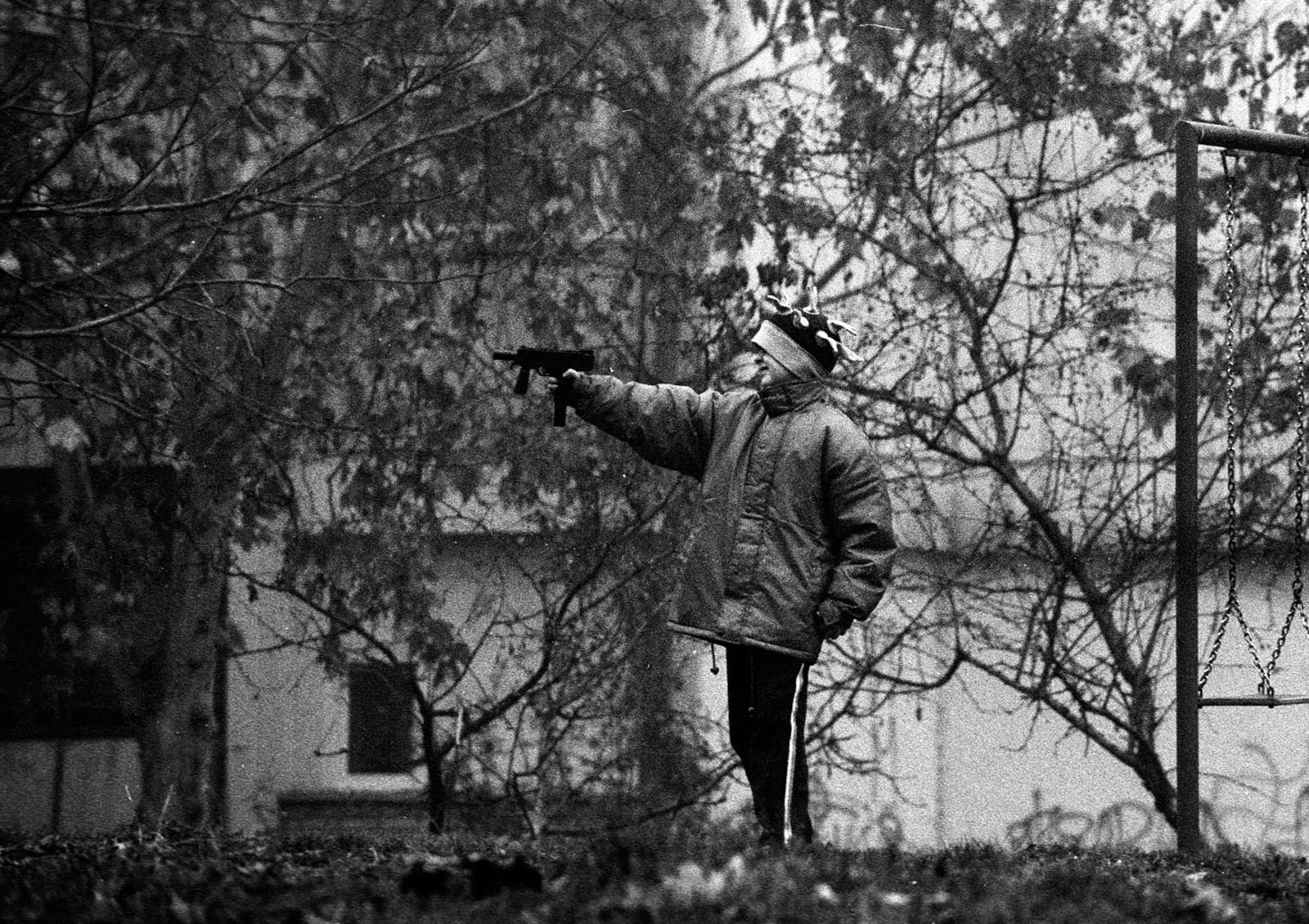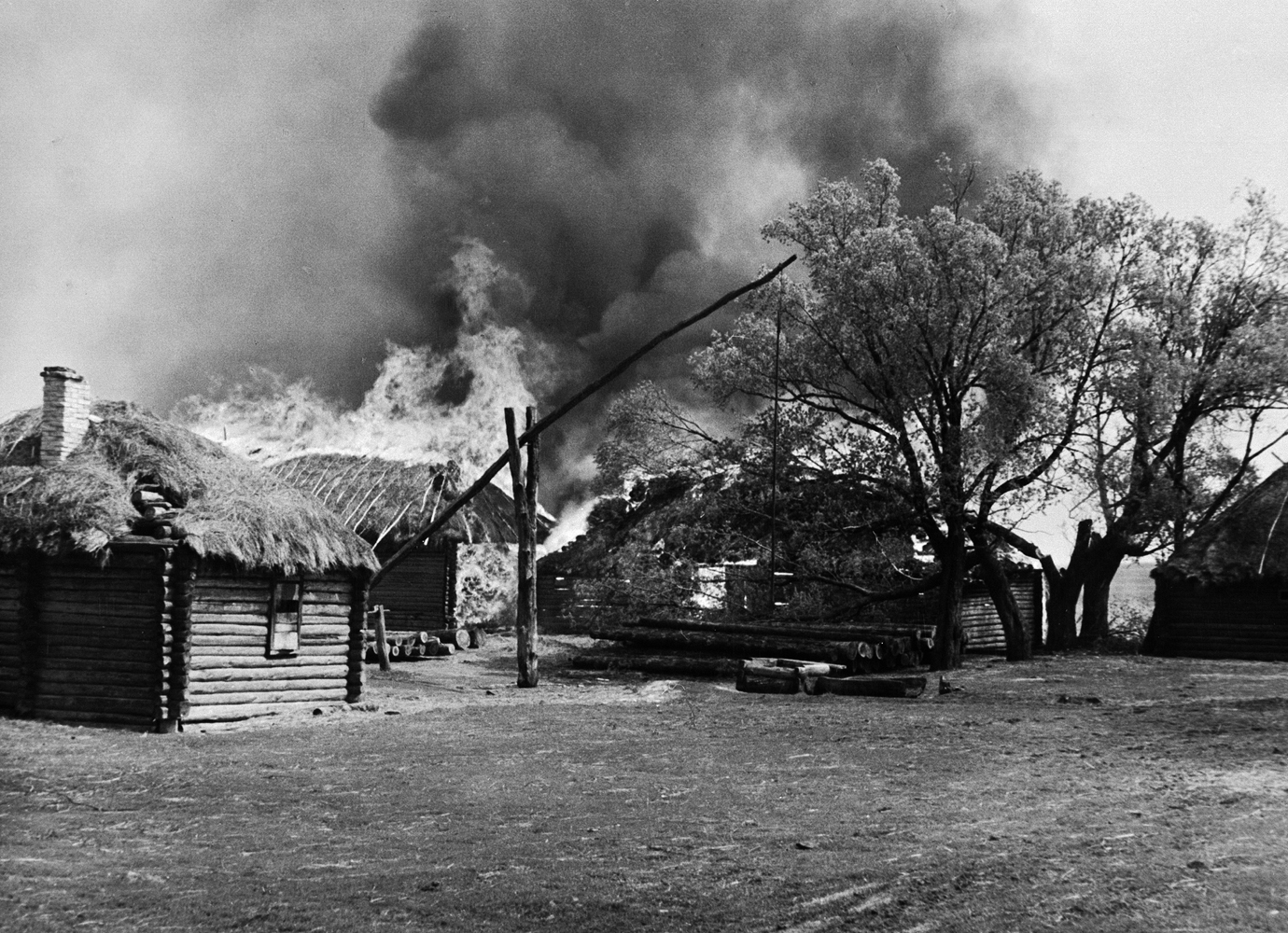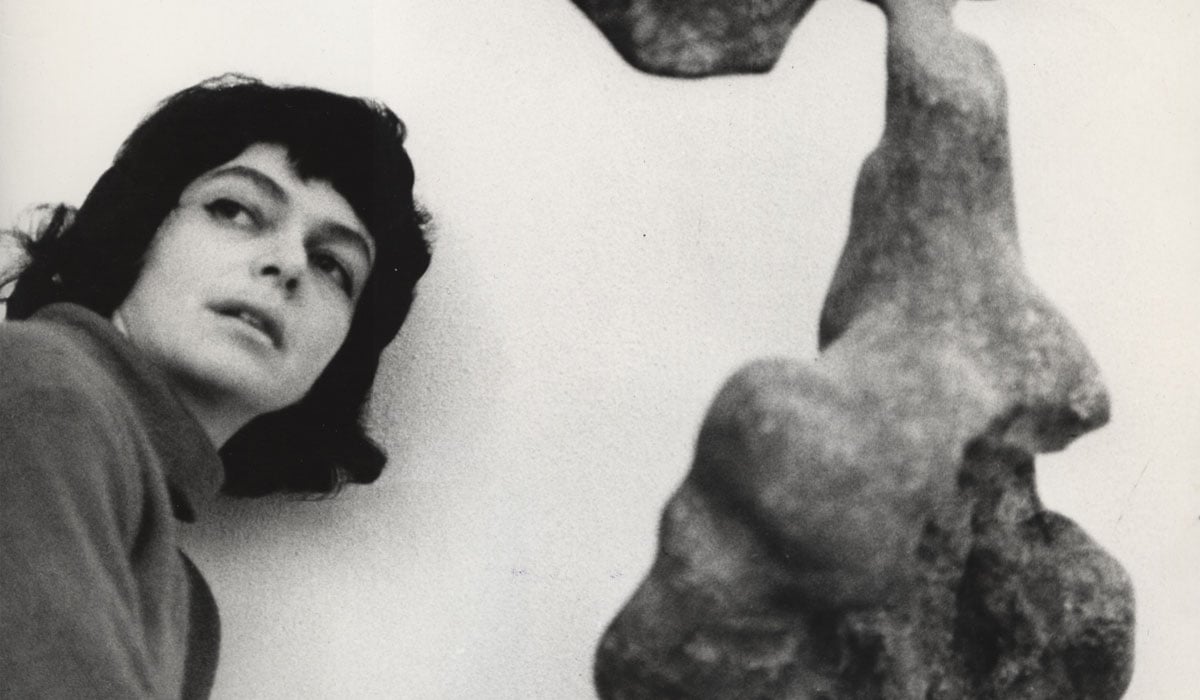Why a Belgrade art gallery is exhibiting the diaries of Yugoslav war criminal Ratko Mladić
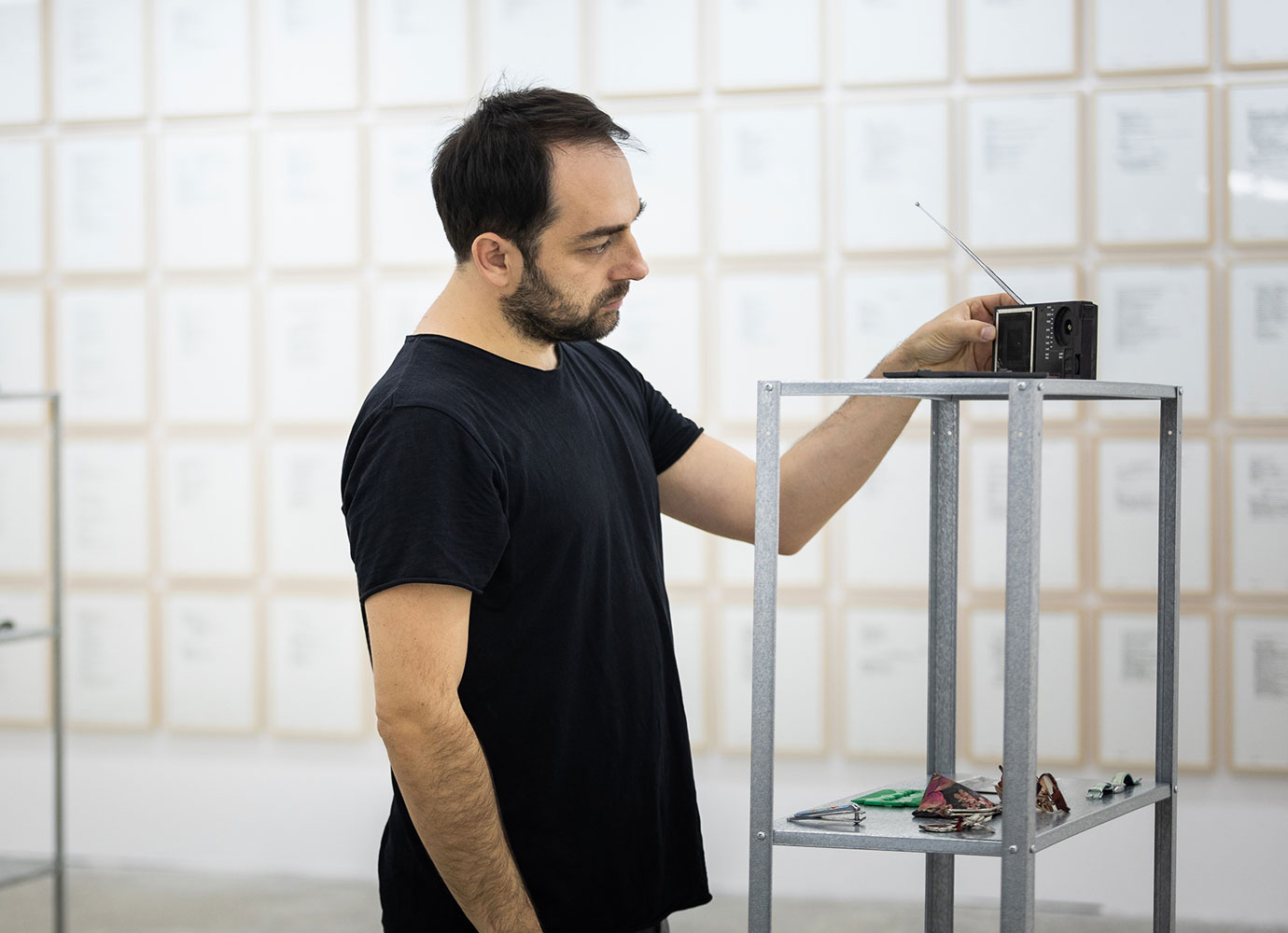
In 2017, Bosnian Serb former commander Ratko Mladić was sentenced to life imprisonment over war crimes and genocide committed during the 1990s. Currently on display in Belgrade, Mladić’s war time diaries should provide crucial insight into the mind of one of the major perpetrators of the Bosnian bloodshed. Instead, artist Vladimir Miladinovic’s archive intervention reveals the banality that often underpins tyrannical behaviour.
The Eugster || Belgrade gallery is currently playing host to a chilling exhibition by local artist Vladimir Miladinovic. The 39-year-old illustrator dug deep into the digital archives of the International Criminal Tribunal from the former Yugoslavia (ICTY), where he exhumed scans of the wartime diaries of General Ratko Mladić, the former military leader of the Bosnian Serbs during the Yugoslav Wars, and a convicted war criminal, whose rap sheet includes atrocities such as the siege of Sarajevo and the Srebrenica massacre. Miladinovic has meticulously and laboriously recreated hundreds of pages of Mladić’s diary by hand using ink on paper, creating an intriguing piece of work that lets us peer over the shoulder of a man who has been dubbed “the butcher of Bosnia”.
Those expecting to develop a greater understanding about the horrors of war or the nature of evil will leave Miladinovic’s exhibition disappointed
Bearing the unassuming title of The Notebook, Miladinovic’s work consists of 400 framed pages that have been neatly arranged into five rows of 80 frames that stretch across the sparse, white walls of the hangar space that houses the exhibition. The pages are taken from one of the 18 notebooks that were discovered by ICTY investigators hidden behind a false wall in Mladic’s family apartment in Belgrade in 2010. Mladić was still on the run at the time, having gone underground in 2001, following the arrest of former Serbian president Slobodan Milosevic for his own role in the horrors of the Yugoslav Wars. Mladić would finally be apprehended in 2011 in the village of Lazarevo, some 90 km north of Belgrade, and it is widely suspected that the Serbian state apparatus knew where he was all along but only agreed to give him up following intense pressure from their Western benefactors.
Vladimir Miladinovic, from The Notebook, currently on display at Eugster || Belgrade. Image: Image: Ivan Zupanc / Eugster||belgrade
Miladinovic’s work is a copy of Mladic’s oldest notebook, which covers the start of the Bosnian War in 1992. Or, rather, it is a copy of a copy. Following the discovery of the stash of notebooks, a team of graphologists first had to analyse Mladic’s handwriting and confirm that it was really his before the diaries could be presented to the ICTY as evidence. After that, every marking, be it a letter, a line or even a scribble, had to be converted into computerised text and translated into English, creating an end product that looks something like a CAD drawing. Miladinovic then takes this process to its logical conclusion: having been converted from handwriting into digital form, the artist uses his hand to partially reverse this process and turn the diary into something that sits somewhere between court evidence and Mladic’s original scrawlings. Miladinovic creates something new by taking half a step backwards.
There is an unsettling disconnect between the inanity of the diary’s content and my personal knowledge of what was happening on the front at the time
His reasons for doing so are both practical and artistic. Firstly, Mladic’s original diary is in barely-legible cyrillic, that even a graphologist would struggle to read. Secondly, the focus of Miladinovic’s work isn’t on the original diary or its contents. Instead, he is more interested in the documents that the ICTY have deemed worthy enough to use as evidence because he wants to raise questions about the value of these documents and what purpose evidence serves.
“I often read [Georges] Didi-Huberman’s book Images in Spite of All: Four Photographs from Auschwitz in which he asks a very provocative question: do we need photographs from Auschwitz to believe that the Holocaust actually happened?” muses Miladinovic. “Are we capable of believing that something happened without the presentation of evidence? He also raises the question of who is this evidence intended for: does this evidence exist for the non-believers for the intended purpose of convincing them, which is what the courts exist for to a degree, right? But what about the people who do believe? Do they need the evidence to visualise what happened?”
Those expecting to develop a greater understanding about the horrors of war or the nature of evil will leave Miladinovic’s exhibition disappointed. Mladic’s diary entries are utterly banal and reading them feels more like going through the minutes of an office meeting than someone’s intimate thoughts. Mladić writes in the highly bureaucratic, deeply impersonal language of a state official and lists mundane details from his daily routine, such as who he met with, their family members and vague details about their conversations. There is an abundance of names and phone numbers, pieces of military intelligence such as “54 motor vehicles and two passenger ones did not leave out of the 20. In the barracks, they took 48 vehicles straight away and four later” and long lists of weaponry and equipment.
There is nothing in the notebook that might be deemed a smoking gun. No evil plan, no personal commentary on the war, not even the slightest hint of the crimes that Mladić would later be convicted of. The closest we get to this are the names of villages and population numbers relating to their ethnic makeup. Page 55 contains perhaps the most darkly revealing entry: “Problem of the Krajina: 14,500 Muslims”. But even this is just my mind projecting onto the blanks, linking the words “Muslim” and “Problem” to mental images of news reports from the war. There is an unsettling disconnect between the inanity of the diary’s content and my personal knowledge of what was happening on the front at the time.
We come expecting to gain a cathartic insight into the forces that drive humanity to commit such unspeakable evil
Ultimately, The Notebook left me with a hollow flatness. I think that most people who visit this exhibition come with the expectation that Mladic’s personal thoughts might reveal something about the atrocities committed under his command. We come expecting to gain a cathartic insight into the forces that drive humanity to commit such unspeakable evil, perhaps with the naive hope that it might make us better equipped as individuals to prevent such horrors from ever happening again. But that doesn’t happen. The entries are so dull and incomprehensible that you quickly lose interest in trying to read through them and begin to skip randomly between pages, skimming only snippets. But in a way, therein lies the quiet brilliance of Miladinovic’s work.
Installation shot of The Notebook at Eugster || Belgrade. Image: Ivan Zupanc / Eugster||belgrade
Human beings quite evidently have a macabre fascination with murder. Popular culture is choked with true crime podcasts and psychological thrillers about serial killers, which fetishise and mystify sociopathy, transforming it into cheap entertainment that’s designed to jolt us with a thrilling dose of adrenaline. The Notebook is the polar opposite of that and, having studied Miladinovic’s work, I can’t help but draw parallels with Hannah Arendt’s famous New Yorker report from the Adolf Eichmann trial in Jerusalem, in which she coined the now-immortal phrase “the banality of evil”. Mladic, the butcher of Bosnia and the architect of the Srebrenica massacre – the only mass killing in Europe since World War II to be classified as genocide – is as objective of an example of evil as you are likely to find, and his diary is suffocatingly banal. If there are any lessons on evil to be gleaned from Arendt’s assessment of Eichmann or Miladinovic’s transcriptions of Mladic’s notes, it’s that there are no succinct answers or tidy narratives that can explain it. Horrors of that scale cannot be adequately understood or preempted by the normal human mind. There is a real value in the way Miladinovic helps demystify Mladic.
The Yugoslav War has been a constant theme in Serbian art for the past 25 years, particularly in the field of cinema. There have been some brilliant works on this subject matter over the years but The Notebook is arguably the most unique contribution to this conversation. Miladinovic is a visual artist but there’s a performative aspect to his work. He began his creation in 2016, monastically reproducing pages day after day. In his own words, this process was “slow, banal and very often boring” work. I can only imagine how many times he must’ve felt compelled to give up, just as I gave up trying to read through the 400 pages of Mladic’s diary. I can’t help but feel like there’s a hidden symbolism here, a commentary on the hard work that Serbian society has shirked in facing up to its own historical complicity in Mladic’s crimes.
For many in Serbia, Mladić is still regarded as a hero rather than a war criminal. Shortly after he was finally sentenced to life in prison by the Hague in 2017, Serbia’s biggest football club, Red Star, was fined after its fans unveiled a banner proclaiming “A thousand life sentences and an honourable Serb would still hail you” during a UEFA Europa League fixture. This sort of repugnant nationalism isn’t a rare occurrence. Last year I attended a screening of the documentary The Trial of Ratko Mladić at the BelDocs film festival and saw a Q&A session with the filmmakers hijacked by members of the audience who immediately leapt to Mladic’s defense, fighting back with tired moral relativism about “atrocities being committed by both sides” in the war.
Miladinovic tells me that he doesn’t expect any of these people to “come to the exhibition to change their mind” and I personally think it’s a bit naive to expect an art exhibition to shift public opinion in a country where the official government line rejects the verdict that Mladic’s crimes in Srebrenica qualify as genocide. But that shouldn’t matter. We need a regular stream of art of this nature to serve as a moral weight on a society that still refuses to answer uncomfortable questions about its past.
